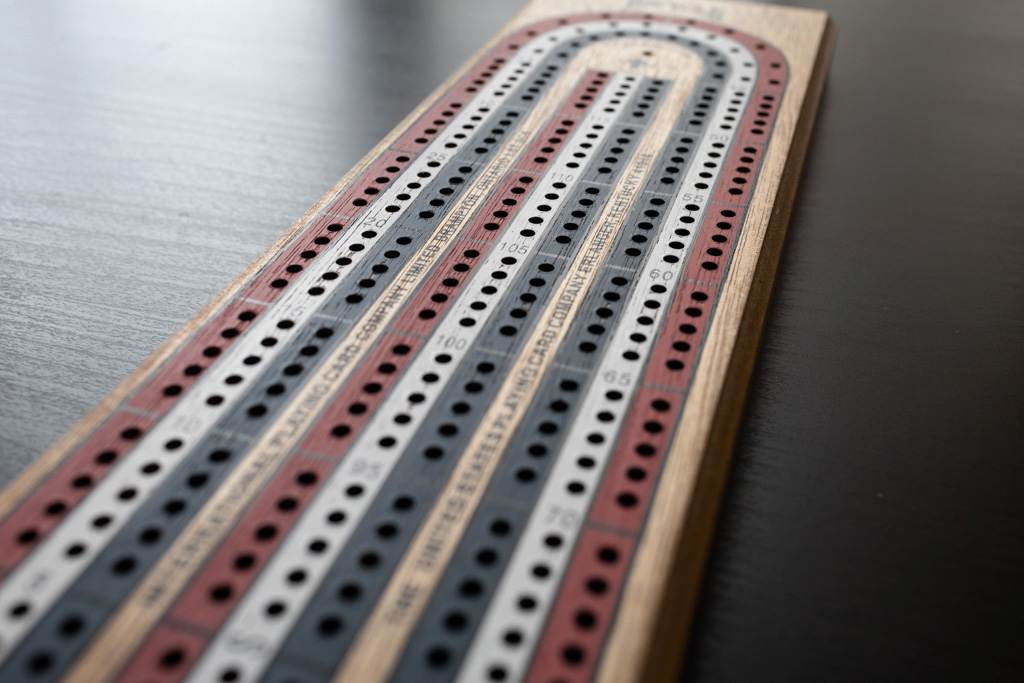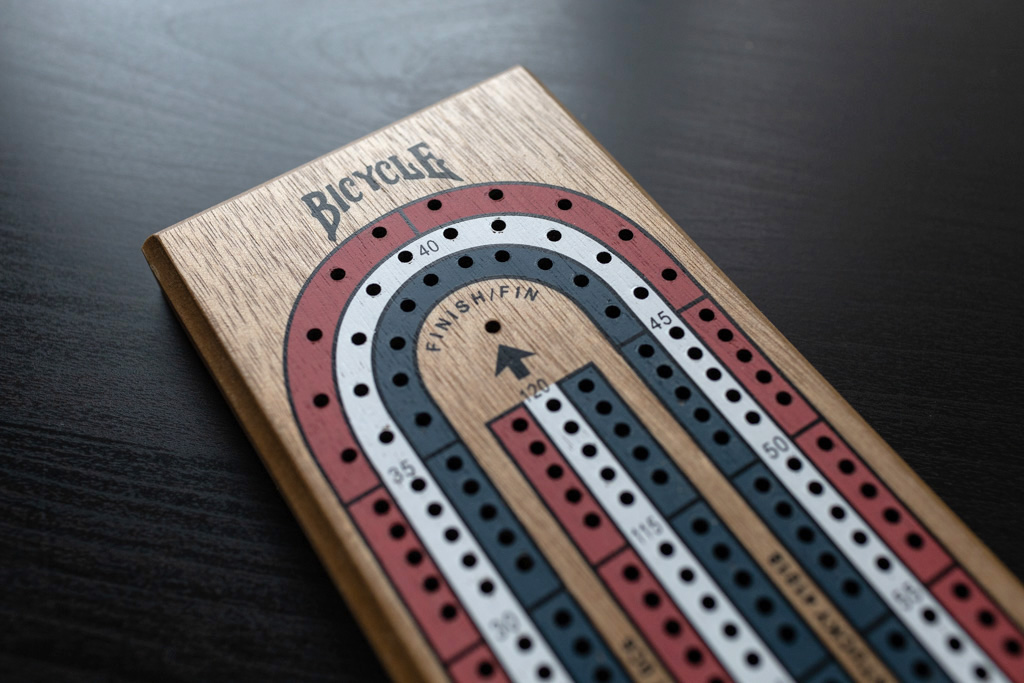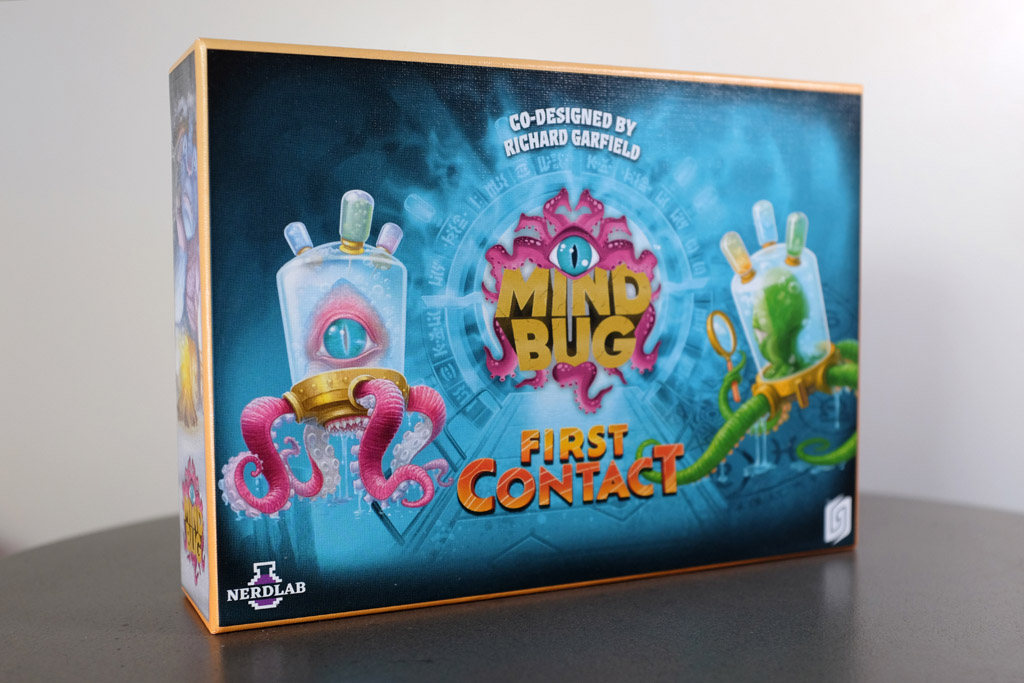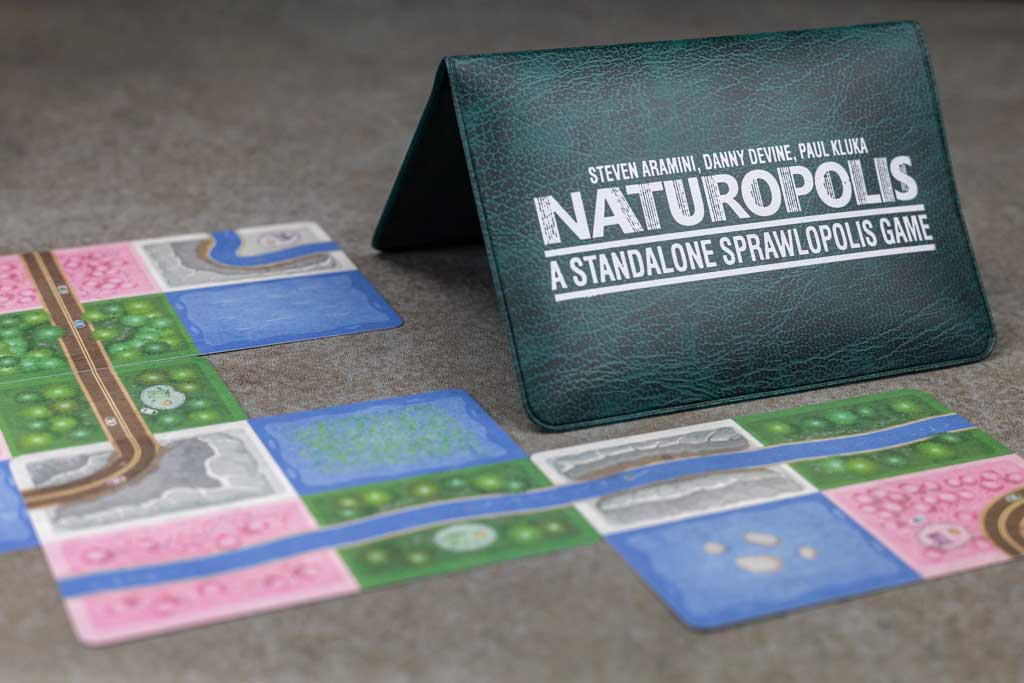Cribbage is a classic card game with roots dating back to the 17th century that has endured due to its intriguing blend of skill, strategy, and a touch of luck. Invented by Sir John Suckling, an English poet, and gambler, Cribbage puts players in a contest that demands mental agility and strategic thinking. We’re actually new to this game but fell in love with it after playing on apps and Board Game Arena. One of the tricky part of Cribbage is remembering all the rules, so we created this rules reference to help remember.
Cribbage Board and a Deck of Cards
To play Cribbage, you need a standard 52-card deck, devoid of jokers, and a Cribbage board. The Cribbage board has a series of holes that serve as a scoring device. Players using pegs to track their points. While boards may vary in design, they all feature a continuous path of holes, typically numbering 121.
121 Points
The primary objective of Cribbage is to be the first player to accumulate 121 points. This is chieved through a combination of card combinations and strategic pegging. Throughout the game players endeavor to create high-scoring card combinations while preventing their opponents from doing the same.
Cribbage Card Values
Cribbage assigns distinct values to each card in the deck. Number cards (2-10) hold their face value, while face cards (jacks, queens, and kings) each count as 10 points. Aces hold a value of 1 point. It is important to understand these values as they are the building blocks for scoring in Cribbage.
Determine the Dealer
At the beginning of the game, both players draw a card from the deck. The player with the lower card becomes the dealer, while the other player assumes the role of the non-dealer. In the case of a tie, players redraw until a dealer is determined.
Distribute the Cards
The dealer shuffles the deck and deals six cards to each player, beginning with the non-dealer. Players must then select two cards from their hand to place face-down into the “crib,” a separate pile of cards reserved for the dealer. The crib functions as an additional hand for the dealer, offering an opportunity for extra points.
Cut the Deck and Reveal the Starter Card
The non-dealer cuts the deck, and the dealer reveals the top card, known as the “starter card.” If the starter card is a jack, the dealer scores two points, referred to as “his heels.”
Play Phase
During the play phase, players take turns laying down one card at a time, announcing the cumulative value of the cards played. Players must not exceed a total value of 31; if a player cannot lay a card without surpassing 31, they must say “go,” allowing the other player to continue playing cards until they too must call “go” or reach 31. When both players call “go” or reach 31, the play phase concludes, and scoring commences. The non-dealer initiates the play phase.
Score the Play Phase
Players earn points during the play phase for creating card combinations, including pairs, runs, and totals of 15. The player who placed the last card receives one point for “go” or two points for reaching exactly 31. Scoring occurs in real-time, with players moving their pegs to reflect earned points.
Show Phase
During the show phase, players reveal their hands and calculate their scores based on card combinations. The non-dealer scores their hand first, followed by the dealer. Both players must also factor in the starter card when determining their hand scores. Key combinations include:
- Fifteens: Any combination of cards totaling exactly 15 earns two points.
- Pairs: A pair of cards with the same rank earns two points. Three of a kind earns six points, while four of a kind earns 12 points.
- Runs: A sequence of three or more consecutive cards earns one point for each card in the run.
- Flushes: If all four cards in a player’s hand share the same suit, the player earns four points. If the starter card also matches the suit, the player earns five points.
- Nobs: If a player holds a jack in their hand that shares the same suit as the starter card, they earn one point.
- Score the Crib
- After scoring their hands, the dealer reveals the cards in the crib and scores it using the same criteria as in the show phase. The non-dealer does not score the crib.
- NOTE: the crib only counts flushes if all four cards in the crib and the starter card share the same suit.
Rotate the Deal
Once scoring concludes, the role of the dealer rotates to the other player, and a new round begins. Players alternate dealing throughout the game, ensuring each player has equal opportunities to benefit from the crib.
Declare a Winner
The game continues, with players progressing around the Cribbage board, until one player reaches or exceeds the 121-point threshold. The first player to do so emerges victorious. In the event of a tie, the non-dealer claims the win.

Strategies for Winning Cribbage
Cribbage demands strategic thinking and careful decision-making. To excel in this game players must employ effective strategies. Here are five tactics to enhance your cribbage gameplay and increase your chances of victory.
Know the Scoring System
Mastery of cribbage requires a thorough understanding of its scoring system. Familiarize yourself with various combinations, such as pairs, runs, and fifteens, as well as their respective point values. By recognizing potential scoring opportunities, you can make better-informed decisions about which cards to play, discard, or hold onto.
Discard wisely
During the game, each player discards two cards to form the crib. This action significantly impacts the game’s outcome. When discarding to your own crib, prioritize high-value cards and combinations to maximize your scoring potential. However, when discarding to your opponent’s crib, avoid contributing cards that enable easy scoring opportunities. For example, avoid discarding 5s, as they can lead to multiple 15-point combinations.
Control the Pace
Developing a sense of pacing is crucial to winning cribbage. Keep track of the cumulative value of played cards, aiming to stay under 31 while still scoring points. By managing the count, you can prevent your opponent from benefiting from advantageous card combinations. Additionally, playing cards in a way that forces your opponent to end a run or pair can help disrupt their strategy.
Focus on Endgame Tactics
During the endgame, it’s essential to prioritize pegging points over discarding to the crib. In this stage, players should aim to disrupt their opponents’ plans while maximizing their own scoring opportunities. By keeping track of cards played, you can make educated guesses about which cards your opponent holds, allowing you to make informed decisions about your own plays. Moreover, understanding the remaining cards in the deck enables you to predict the likelihood of specific combinations appearing.
Learn From Experienced Players
Observing and analyzing the strategies of skilled cribbage players can significantly improve your gameplay. Take note of their discarding techniques, pegging strategies, and endgame tactics. Additionally, participating in cribbage clubs, tournaments, or online forums can offer valuable insights into winning strategies and facilitate growth as a player.





